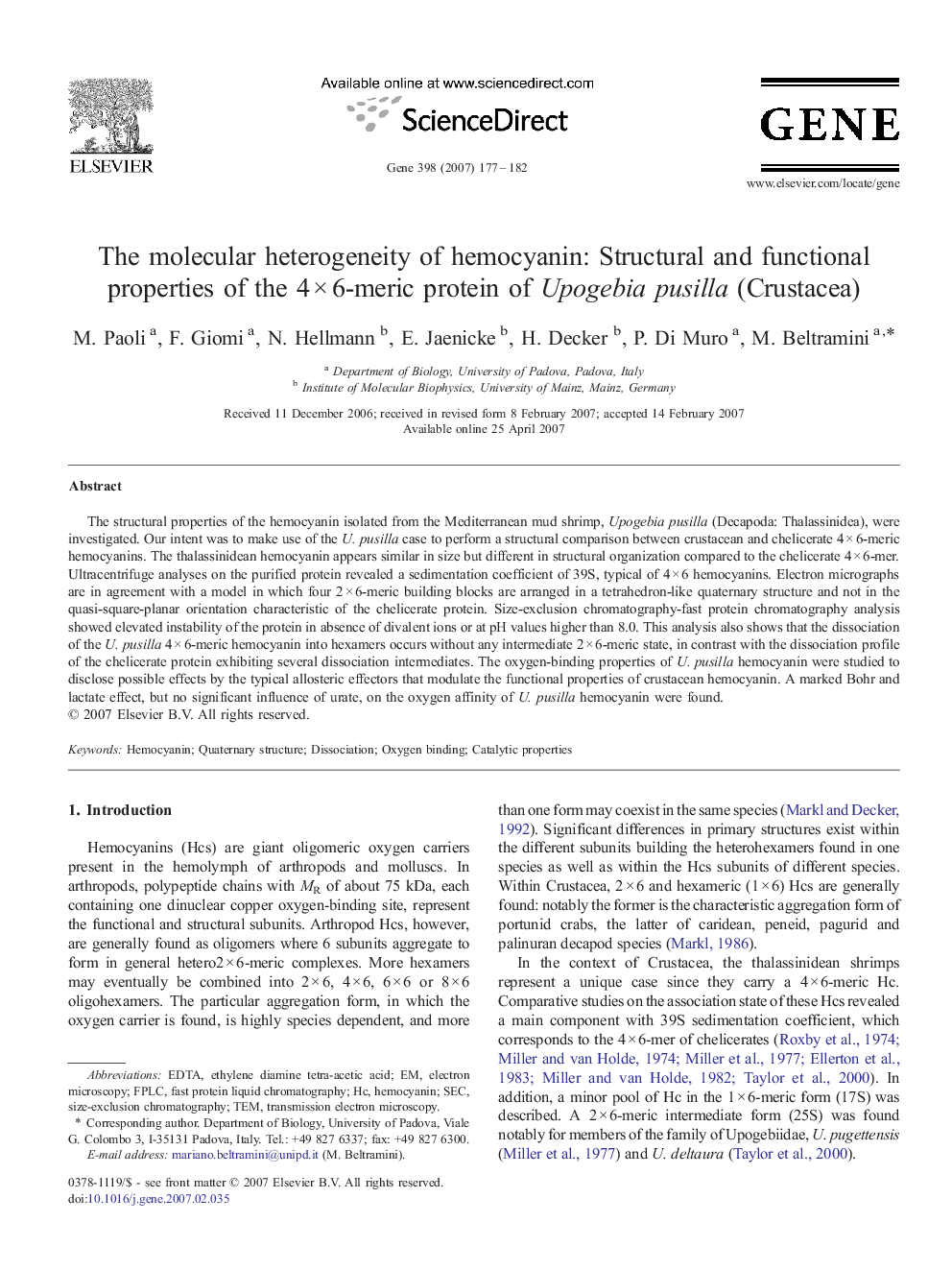| Article ID | Journal | Published Year | Pages | File Type |
|---|---|---|---|---|
| 2819654 | Gene | 2007 | 6 Pages |
The structural properties of the hemocyanin isolated from the Mediterranean mud shrimp, Upogebia pusilla (Decapoda: Thalassinidea), were investigated. Our intent was to make use of the U. pusilla case to perform a structural comparison between crustacean and chelicerate 4 × 6-meric hemocyanins. The thalassinidean hemocyanin appears similar in size but different in structural organization compared to the chelicerate 4 × 6-mer. Ultracentrifuge analyses on the purified protein revealed a sedimentation coefficient of 39S, typical of 4 × 6 hemocyanins. Electron micrographs are in agreement with a model in which four 2 × 6-meric building blocks are arranged in a tetrahedron-like quaternary structure and not in the quasi-square-planar orientation characteristic of the chelicerate protein. Size-exclusion chromatography-fast protein chromatography analysis showed elevated instability of the protein in absence of divalent ions or at pH values higher than 8.0. This analysis also shows that the dissociation of the U. pusilla 4 × 6-meric hemocyanin into hexamers occurs without any intermediate 2 × 6-meric state, in contrast with the dissociation profile of the chelicerate protein exhibiting several dissociation intermediates. The oxygen-binding properties of U. pusilla hemocyanin were studied to disclose possible effects by the typical allosteric effectors that modulate the functional properties of crustacean hemocyanin. A marked Bohr and lactate effect, but no significant influence of urate, on the oxygen affinity of U. pusilla hemocyanin were found.
